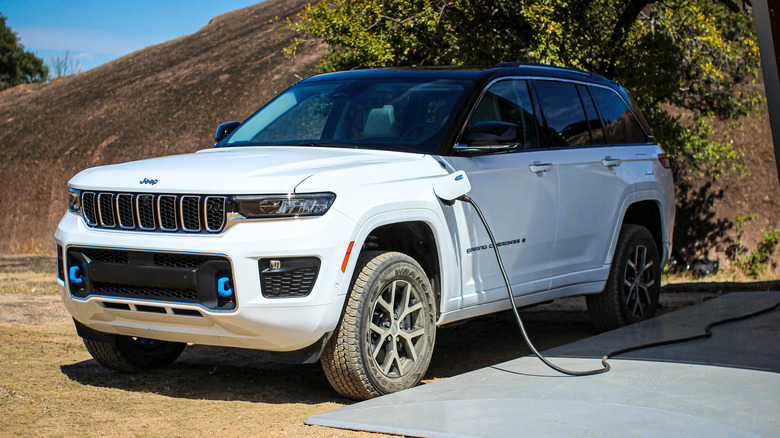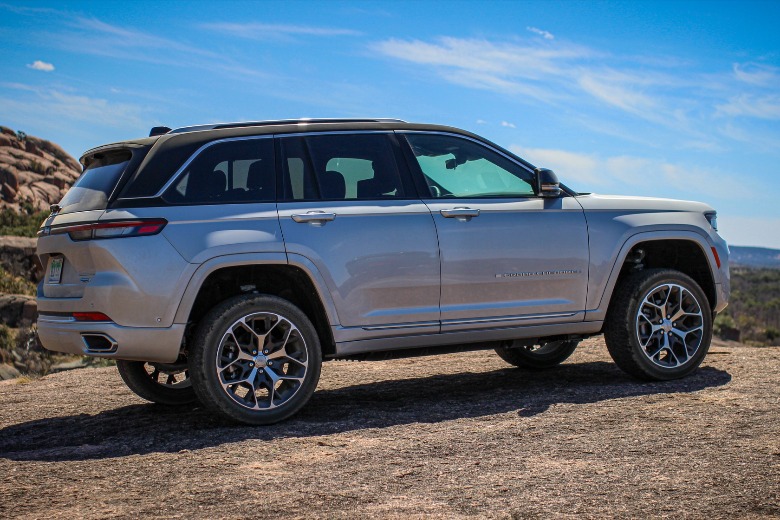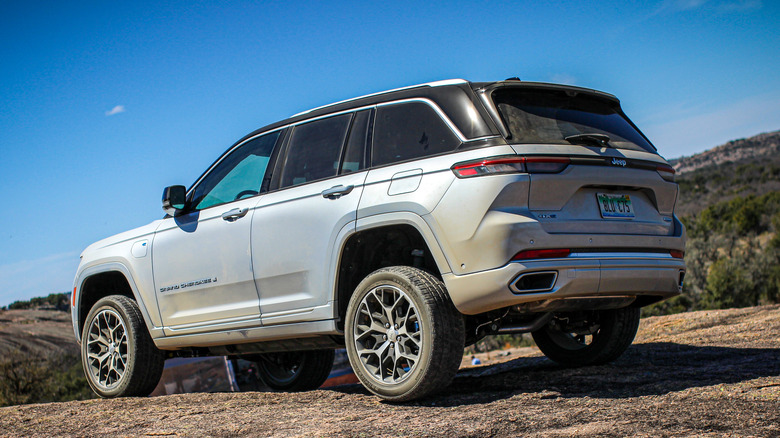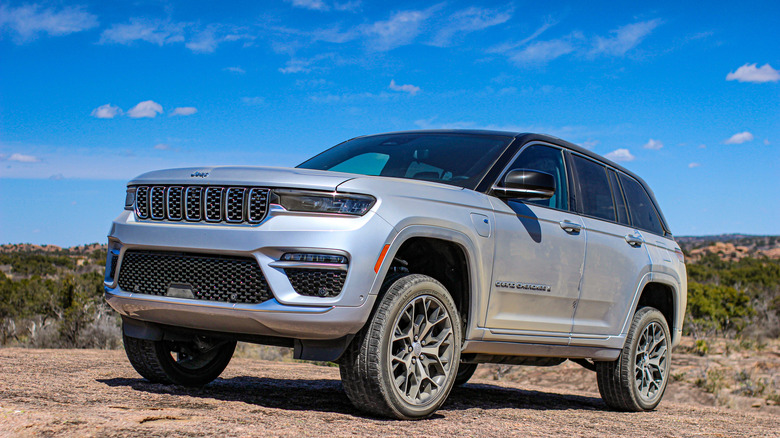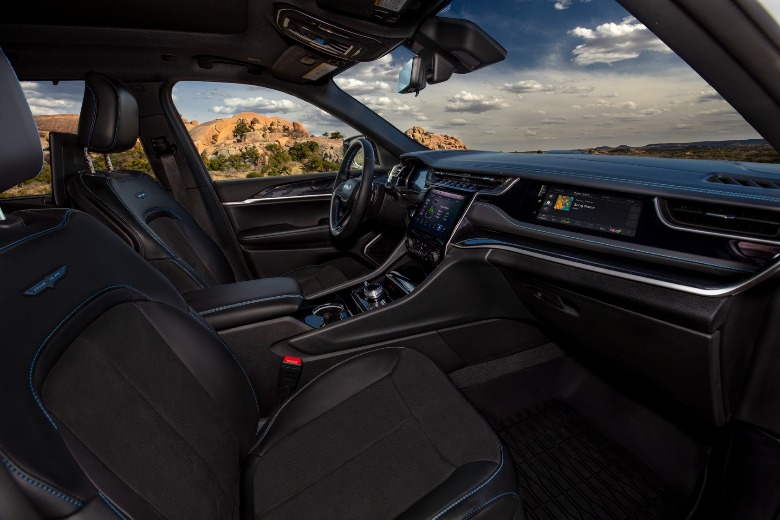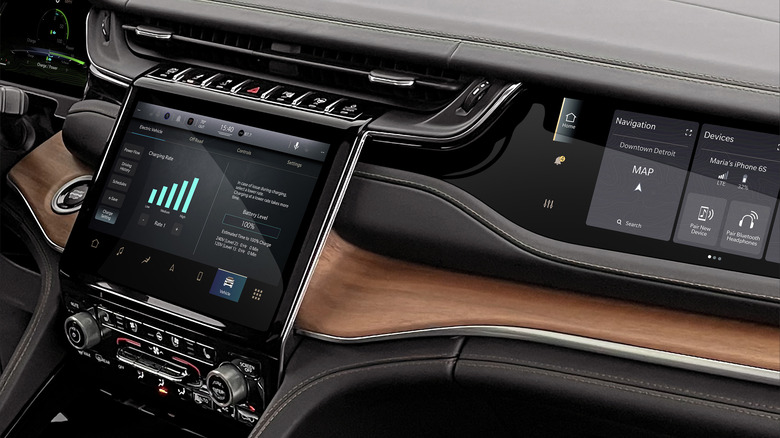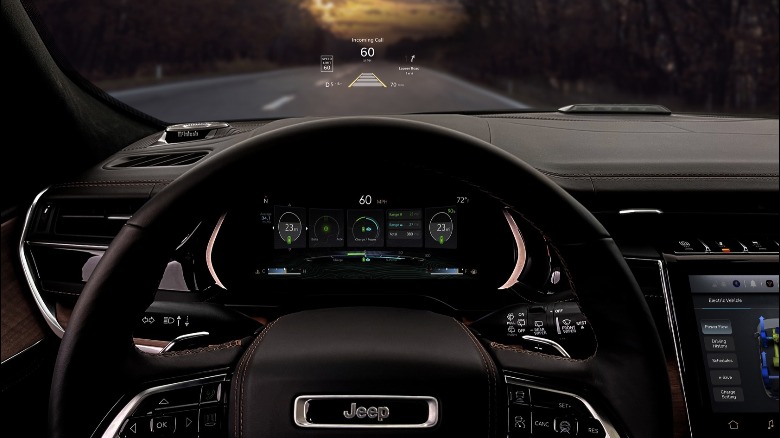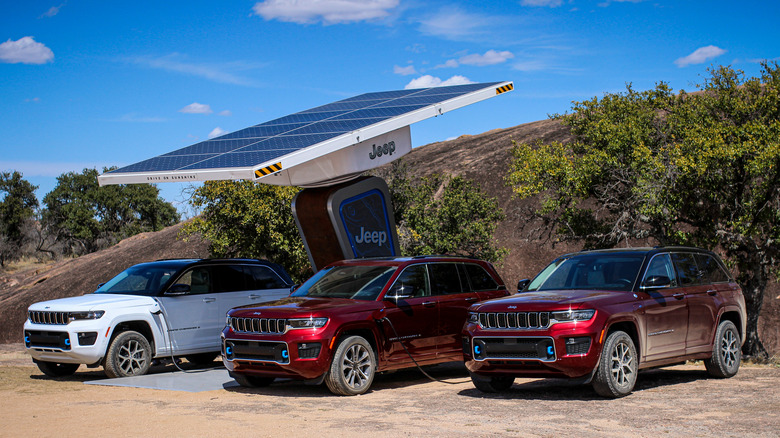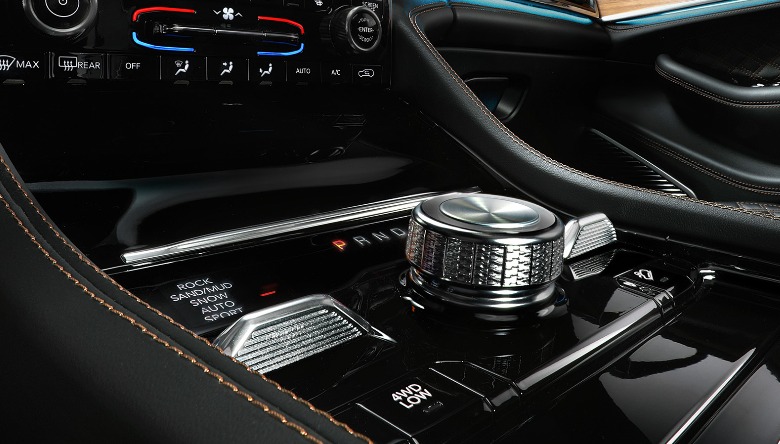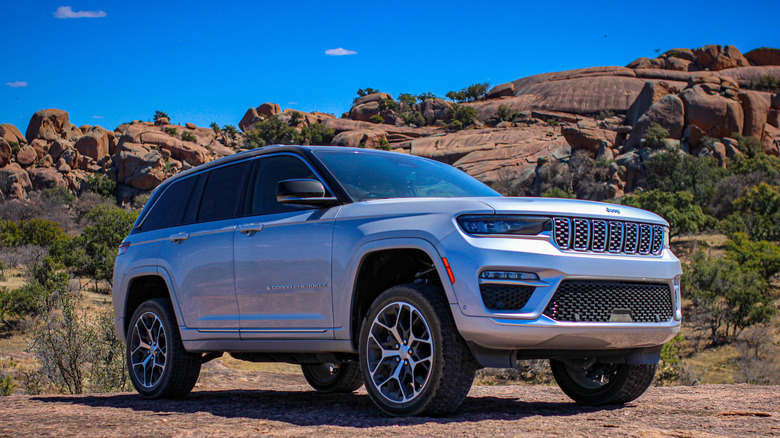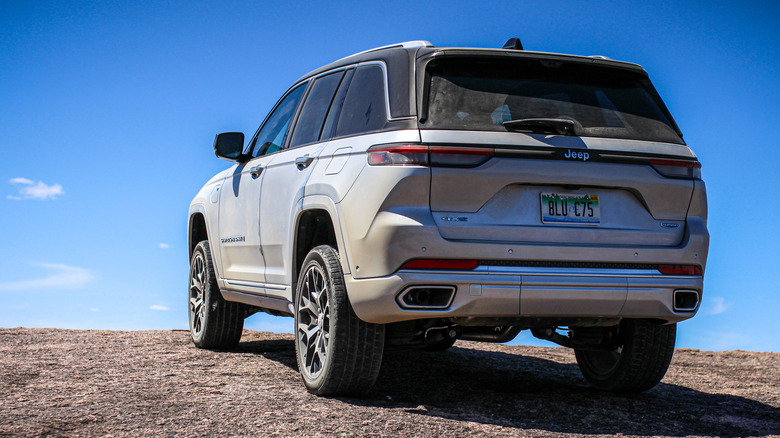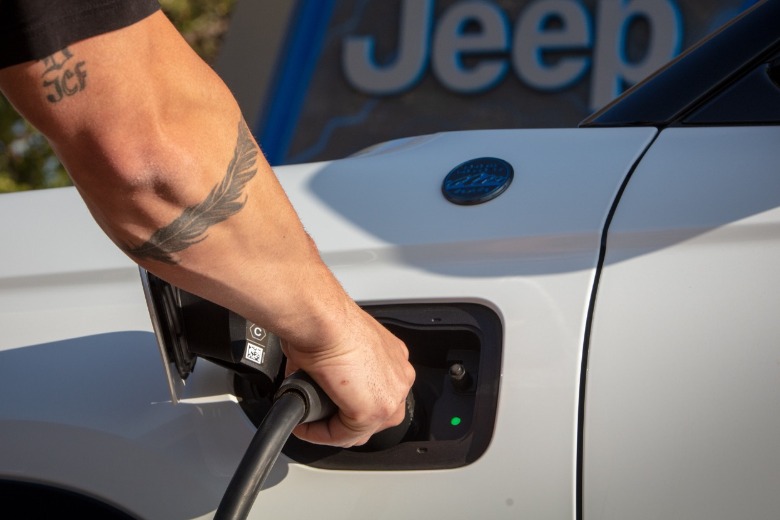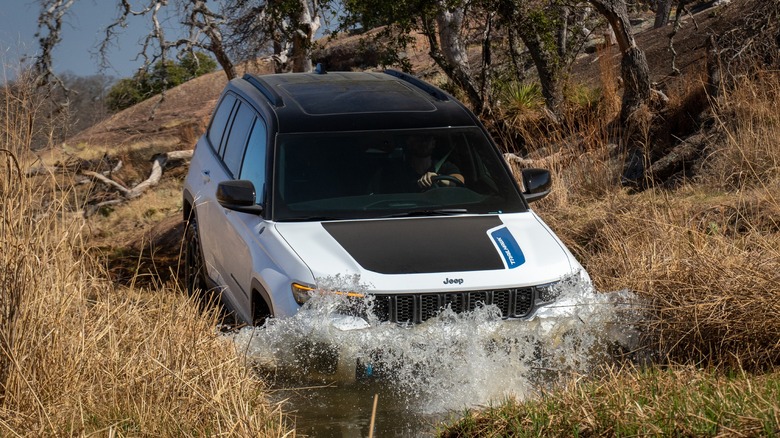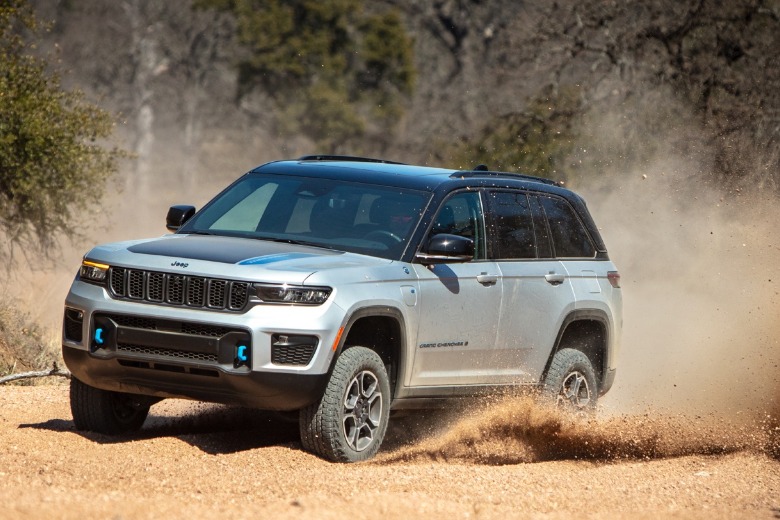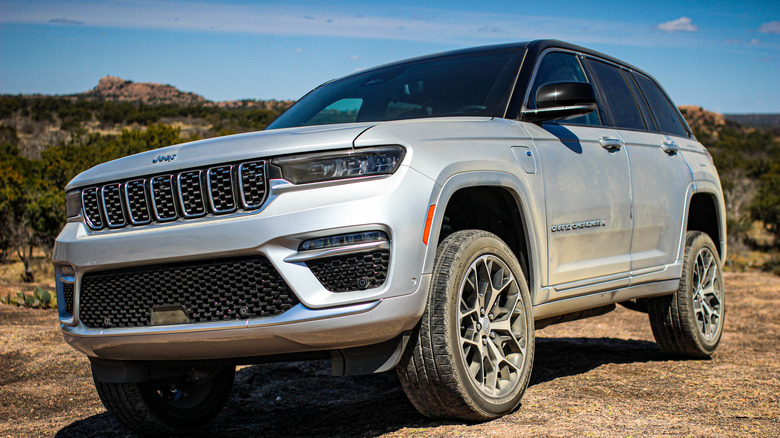2022 Jeep Grand Cherokee 4xe First Drive: Electrified All-Rounder Comes With A Catch
Vehicle electrification isn't coming, it's here. It's been here for a while, in fact, but with companies adopting various strategies and timelines, it's hard to keep track of all the shuffling. Jeep is far from immune from this trend, though it only recently delved into the world of hybridized powertrains with the introduction of last year's Jeep Wrangler 4xe — that's "four-by-E" by the way — finally bringing the characteristics of a hybrid powertrain to its most off-roady ride.
Its success and the company's push to be the "greenest SUV brand in the world" meant a PHEV Grand Cherokee was a sure thing, a car that arguably shoulders the Jeep brand legacy more today than even the legendary Wrangler. As a household name in off-road excellence, Jeep has to maintain the tricky balance of delivering day-to-day utility while still delivering on the rugged capability for adventure most Jeep buyers fantasize about. As a mid-size luxury SUV, the Grand Cherokee has lots of ground to cover, both literally and metaphorically. Putting the latest offering to the test revealed how eager it is to please everyone, and how that may be the most difficult terrain it needs to overcome.
Freedom, electrified
The Grand Cherokee 4xe joins the new fifth-generation Grand Cherokee line-up, which is now composed of the PHEV, two-row Grand Cherokee and three-row Grand Cherokee L. Its powertrain combines a turbocharged 2.0-liter inline-4 engine with two electric motors and a 400-volt battery pack. At a level 2 charger, this battery can be filled within 3.4 hours. This is married to an eight-speed automatic transmission, which sends power to all four wheels, regardless of trim, of which there are four.
The base 4xe is fitted with the standard issue mechanical features, such as a heavy-duty suspension and the Quadra-trac II active 4WD drive system, that includes a two-speed transfer case. Other trims nix the heavy-duty coil springs in favor of the Quadra-lift air suspension, with five height settings that can be adjusted manually or contingent on mode. Sport, for example hunkers the Grand Cherokee low to the pavement to optimize stability at speed. Its most rough-and-tumble trim, the Trailhawk, uniquely features a sway bar disconnect for more articulation when scrambling over uneven terrain. This trim also comes with the Quadra-Drive 4WD system, outfitted with an e-diff for the rear axle.
Rugged good looks
As expected, the fifth-generation Grand Cherokee maintains a ruggedly handsome and familiar appearance. Its forward-leaning grille is a design cue from the classic Wagoneer, a style the current Wagoneer also adpoted. Even in its most basic configuration, the Grand Cherokee has an impressive stature, further enhanced with its air suspension fully raised. The Trailhawk edition looks even more ready for business, with a more aggressive body style and blue tow hooks to denote it as part of the 4xe family.
On the inside, it's Jeep's intention to provide the best interior in the business. While the success rate of that can certainly be debated, it's far from the worst. Wood accents and solid metal touchpoints make the interior feel inviting and comfortable but also robust. All the expected infotainment functions cascade from the dashboard down to the armrest. The 10-inch screen crowns a storage compartment, HVAC controls and the driving settings that flank the drive-select dial. While this keeps most functions right at hand when you need them, there are so many more tied into a multitude of menus.
Screens on screens on screens
Speaking of tech, it's possible to have three 10-inch screens up front – one digital gauge cluster, the infotainment screen, and an optional screen embedded in the passenger seat's dash. The latter has access to just about every system that doesn't impede the driver, and anyone sitting there can help navigate, choose the music, and control any of the entertainment functions available in the optional rear seat screens. In short, it's a great spot for a parent who has to accommodate children on long hauls or anyone acting as a co-pilot for the driver. And if the interface suggests anything, they'll need as much help as they'll get.
Significant attention has been given to the Grand Cherokee's UI and with good reason. Apart from the usual day-to-day settings there is a unique menu in the 4xe dedicated to monitoring battery functions, real-time usage, capacity estimates and so on. There are also customizable widgets that can be prepared for each driver's unique profile. They can set up a home screen as they see fit with a multitude of their favorite apps at the ready. Want to access the 360-degree camera? Drag it to the tool bar. Feel like having the car's navigation on the same screen as your entertainment selection? No problem. This system even switches between the native operating system and Apple CarPlay with relative ease, a handy convenience since drivers are often forced to use one or the other.
In a sense, everything shouldn't take more than two clicks to operate, but the amount of pages, settings and apps ask for lots of attention. There were more than a couple of instances on our ride where we had to pull over and address a setting that couldn't be changed on the fly, either by quick glances at the screen or over voice commands. Co-pilots, sadly, don't come with the car.
Charging forth into adventure
When setting out with a fully-charged Grand Cherokee, the world's your oyster. The combined output of the powertrain provides 375 horsepower and 470 pound-feet of torque, which outperforms both the 293-hp 3.6-liter V6 in the standard Grand Cherokee and the 357-hp from the 5.7-liter Hemi V8. Outshining a Hemi while also providing an EPA-estimated 56 MPGe sounds like a pretty sweet deal.
Initially, it is, and the car — defaulting to hybrid mode on startup — sails down highways with enthusiasm. Switch to Sport mode, which ups the input responses and hunkers the suspension down to a racier stance, and it gets even better. All the while, the Jeep balances out when to apply the performance-boosting electrics to your advantage. This symbiosis is achieved with two electric motors, one replacing the alternator and another, beefier unit mounted to the transmission.
While harmonious, system operation isn't seamless, with a tangible "thunk" in-between the switches from all-electric to hybrid torque delivery as one of two clutches links and un-links the engine and e-motor. It's noticeable but far from a dealbreaker, and the car's hybrid performance functions as advertised. Stray from hybrid mode and the 4xe's benefits start to diminish.
Charming while the juice is flowing
The vehicle defaults to managing its own electrification, but a button push can put it in all-electric or battery-save mode, the latter of which withholds any electrified output in favor of charging the battery for later use. Electric mode is just what it sounds like: full electric operation, ideal for short guilt-free trips or for traveling off-road in near silence (there's still the NHTSA-mandated pedestrian safety noise emitted at low speeds).
Both have their uses in the right time and place. Switching to E-save on the highway, for example, might be the perfect time to fill the battery for electric-only use later on local streets. Jeep purports that the Grand Cherokee can provide nearly 25 miles of all-electric range, plenty for the average daily jaunts we take around town. In practice, a light foot might get you 22 miles, but even the slightest aggressive throttle behavior whittles that down considerably. And when the battery is exhausted, so is much of the Grand Cherokee 4xe's charm.
Habit-forming
Though it's never truly empty, once the extra oomph from the battery is gone, it's dead weight, being pulled by a 2.0-liter turbo-four with 270 horsepower. For the record, that's beneath the 293-hp from the V6 mentioned before, and that doesn't have the extra li-ion poundage to propel. In this regard, the Grand Cherokee 4xe isn't special: this has been the case for all hybrids for quite a while, though it's particularly glaring in an era of full-electric vehicle ubiquity. Ultimately, what the Grand Cherokee is capable of is down to, well... you.
It doesn't feel particularly fair to pass the buck on the 4xe's performance capabilities onto the driver, but whether it's "good" or "bad" is wholly determined by the user's ability to keep the battery charged. Ideally speaking, the Grand Cherokee 4xe would go to an EV-ready home to charge whenever it's not in use, zipping around on battery power most of the time and utilizing its hefty hybrid prowess on adventures out of town and off the grid.
The reality is that most homes don't have car chargers installed, and the ones that do are put there by people who drive BEVs. Hybrid users tend to let the engine do the charging, traveling in e-save mode most of the day, hoping to eke out hybrid use later. It's not the best habit, but it takes a particularly disciplined customer to stretch out the benefits, and most of those have moved on to all-electric rides.
Ultimately, your milage will literally vary, but most customers plunking down at least $57,700 (without destination fees) — a price comparable to the higher-tier trims of the V6 Grand Cherokee — to get the Superman of Jeeps will be bummed out to discover that it's Clark Kent most of the time.
Off-road exaggerates the differences
In terms of off-road chops, the Grand Cherokee meets the standards set by Jeep and demanded of its customers. The push-button suspension adjustment readies the SUV for action in a handful of seconds, particularly with the terrain-selection settings dialed in to tackle sand, mud, rocks, or whatever awaits it. Even without the sway bar disconnect of the Trailhawk, the Grand Cherokee can surmount a surprising array of obstacles. Off-road-specific menus relay the suspension travel, wheel angle and other useful tidbits of terrain-tackling info, and 360-degree cameras help provide additional situational awareness.
Be prepared for some old-fashioned overlanding work, however. Though similar to the push-button systems found in luxury rough-riders like Land Rover, the Grand Cherokee's function is to make the driver capable, not do the work itself. As such, it would reward the customer who would journey beyond the usual boundaries that most luxury family vehicles occupy.
The hybrid powertrain comes into play in interesting ways when off the beaten path. Jeep claims the Grand Cherokee has tackled the treacherous rubicon trail in all-electric mode. It was something we were eager to put to the test, though the 4xe's systems ultimately have the final say depending on the situation.
For instance, plowing through a boggy section of our trail necessitated some heavy foot to maintain momentum, causing the Grand Cherokee to kick back into hybrid mode to make sure there was enough power underfoot to slog through. From then on, the shifting back and forth between power outputs made the finesse of rock scrambling difficult to parse in the immediacy. The 4xe shifted from instant electric torque on demand to bursts of turbocharged engine power, making consistent throttle management tricky.
The bottom line
Those curious can try out a Jeep Grand Cherokee 4xe as early as this spring. Prices without destination fees start at $57,700 for the base model, $62,485 for the Trailhawk, $65,760 for the Overland trim, and $69,820 for the top-tier Summit edition. Like the Wrangler 4xe that preceded it, it's potentially one of the best, most efficient Jeeps in the lineup, so long as you keep it within specific behavioral bounds. Unfortunately, they're something Jeeps have a habit of going beyond.
